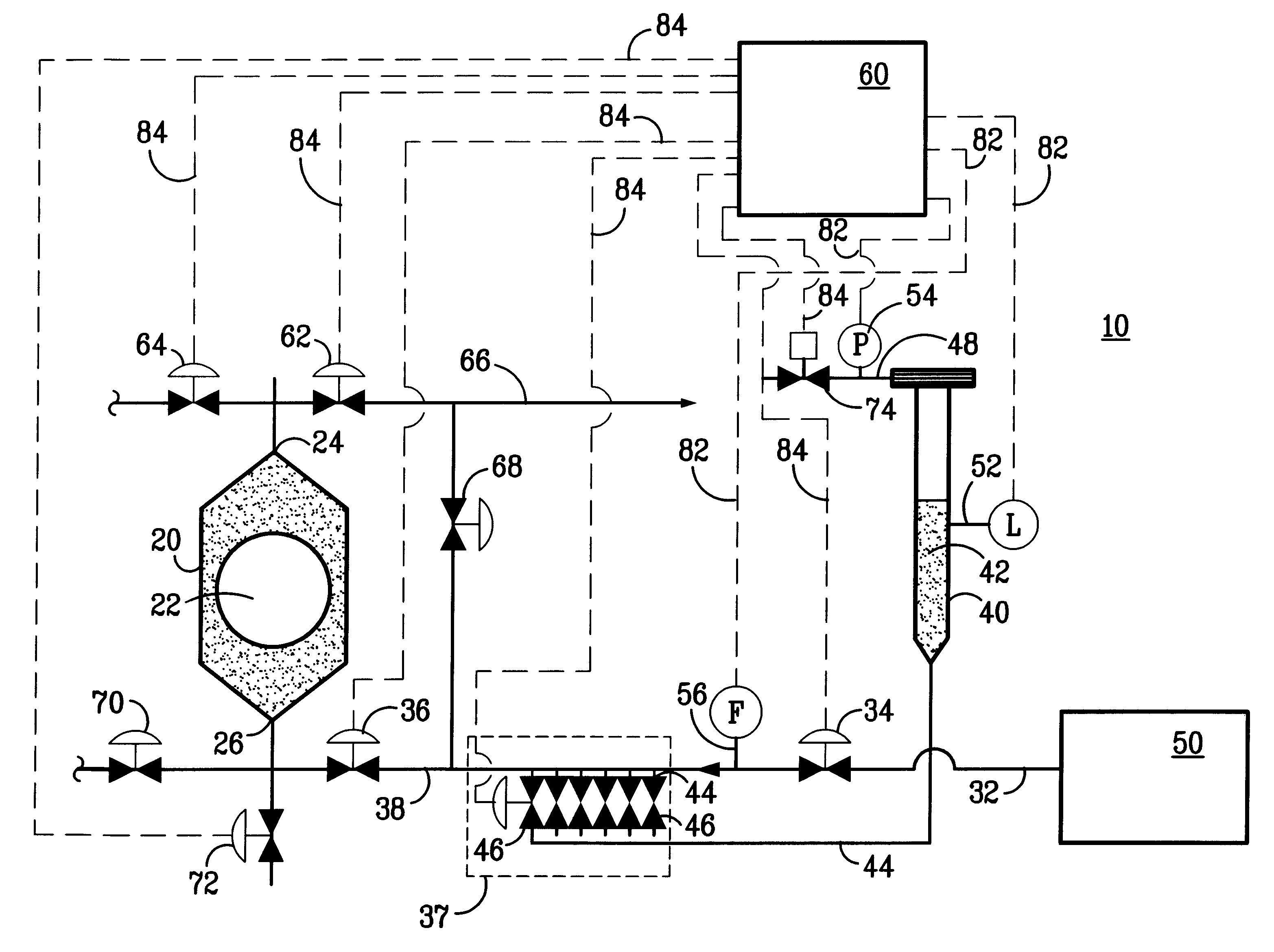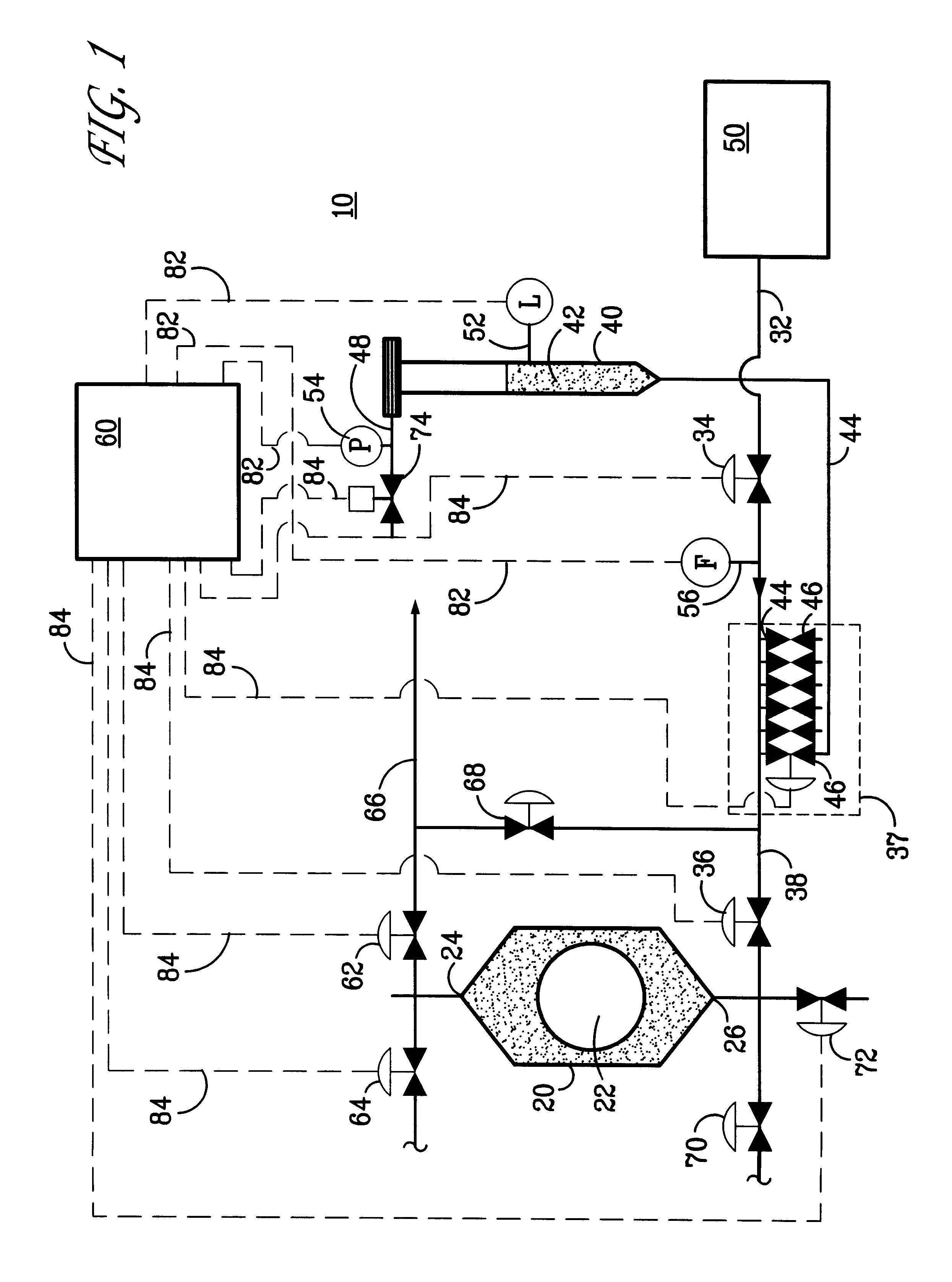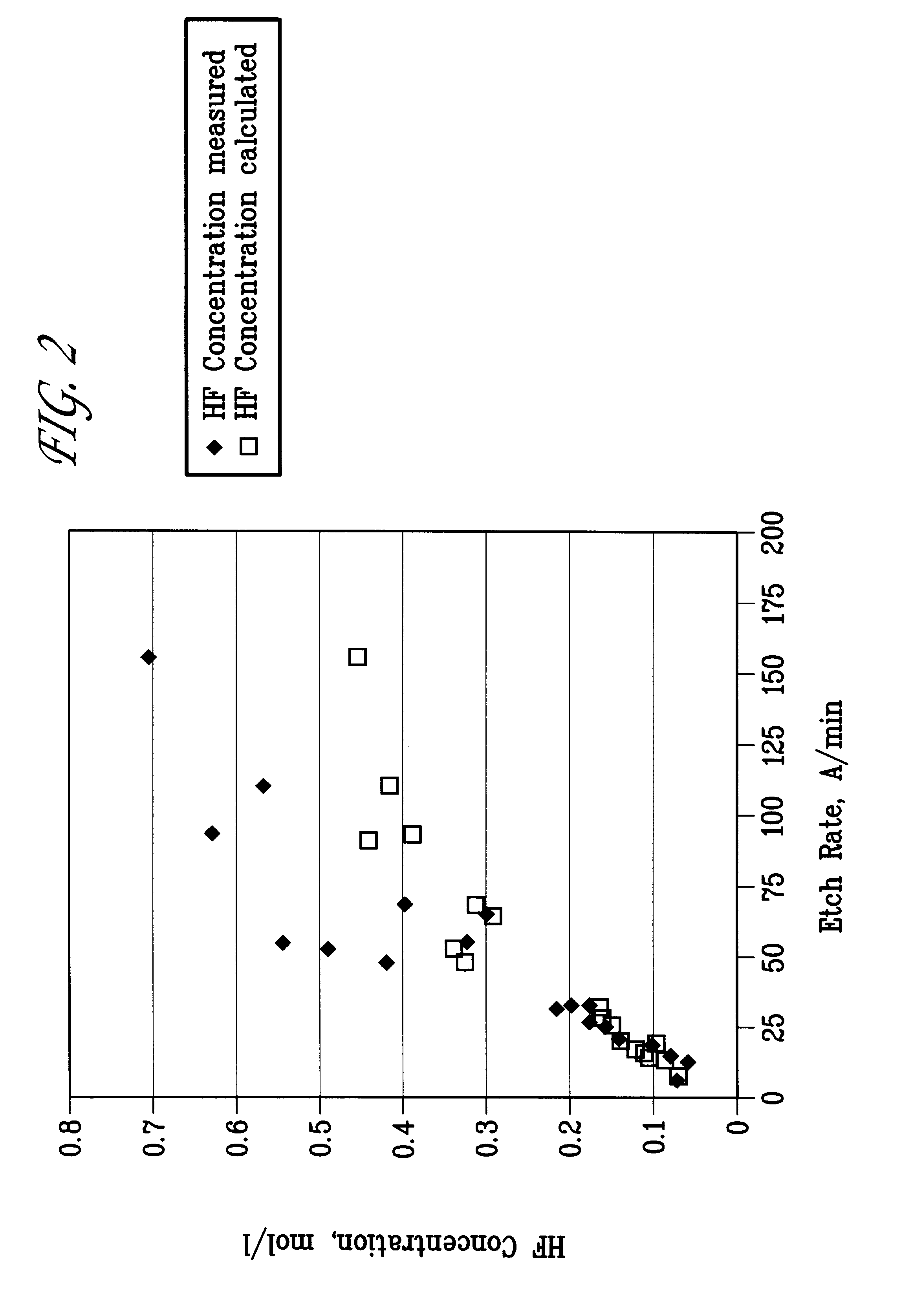Methods and systems for determining chemical concentrations and controlling the processing of semiconductor substrates
- Summary
- Abstract
- Description
- Claims
- Application Information
AI Technical Summary
Benefits of technology
Problems solved by technology
Method used
Image
Examples
example
A CFM Full-Flow.TM. system Model No. 8100 was fully loaded with 8" diameter wafers. The equipment set-up was similar to that shown in FIG. 1 to etch the wafers with a hydrofluoric acid solution. The system used included separate liquid supply systems for deionized water and concentrated 49 wt % hydrofluoric acid. The system also had an Alan Bradley PLC processor for receiving flow rate data for the liquid streams.
The wafers were first contacted with deionized water at a flow rate of 18 gpm and temperature of 40.degree. C. for 5 minutes to wet the wafers. After wetting the wafers, a hydrofluoric acid wet processing stream was formed by injecting at a predetermined flow rate 49 wt % concentrated hydrofluoric acid solution into a deionized water stream flowing at a rate of 18 gpm per min. The concentrated hydrofluoric acid was held in a container having a cross sectional area of 18 cm.sup.2 and was injected into the stream of deionized water through the use of nitrogen pressure. The fl...
PUM
 Login to View More
Login to View More Abstract
Description
Claims
Application Information
 Login to View More
Login to View More - R&D
- Intellectual Property
- Life Sciences
- Materials
- Tech Scout
- Unparalleled Data Quality
- Higher Quality Content
- 60% Fewer Hallucinations
Browse by: Latest US Patents, China's latest patents, Technical Efficacy Thesaurus, Application Domain, Technology Topic, Popular Technical Reports.
© 2025 PatSnap. All rights reserved.Legal|Privacy policy|Modern Slavery Act Transparency Statement|Sitemap|About US| Contact US: help@patsnap.com



